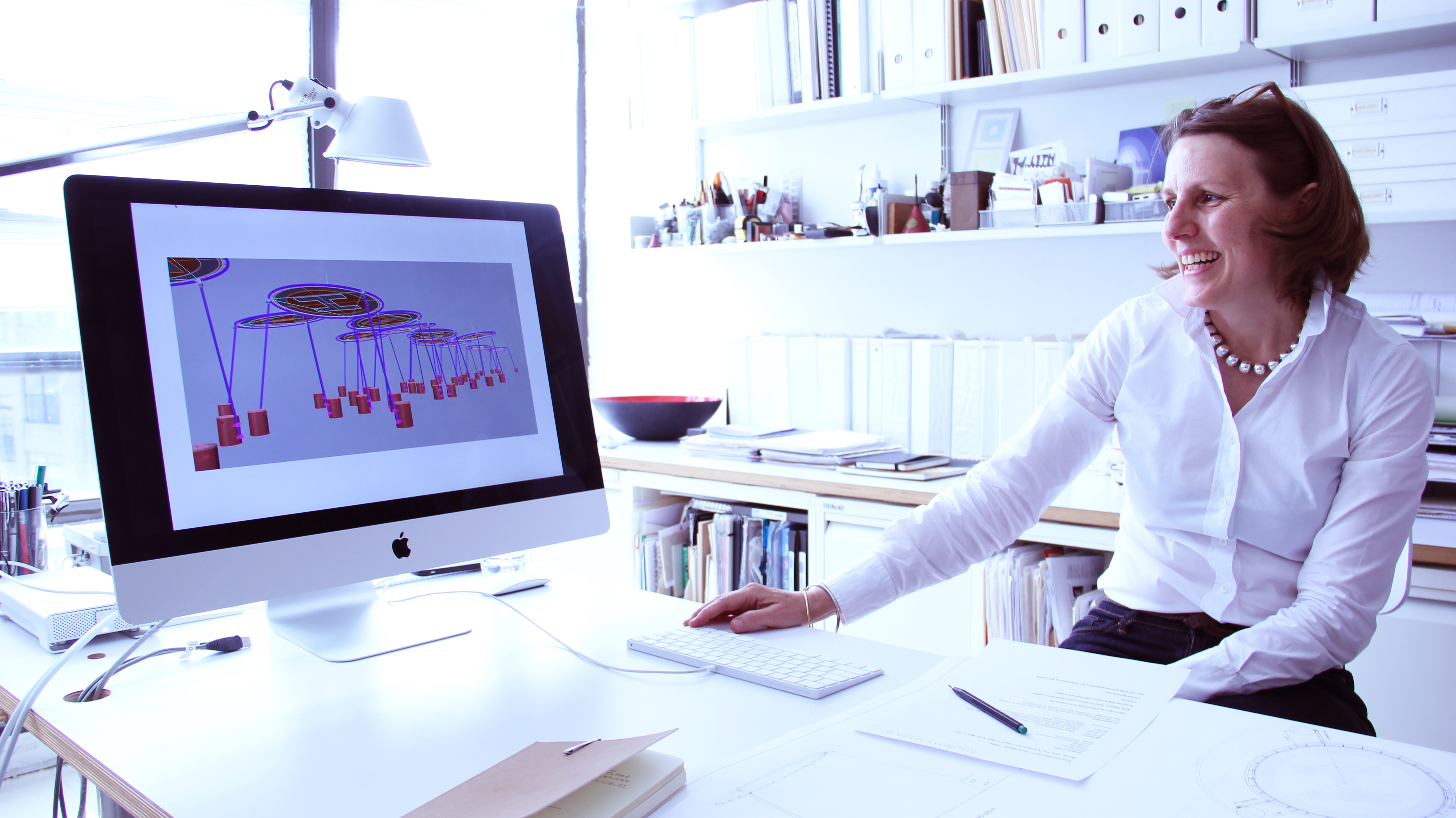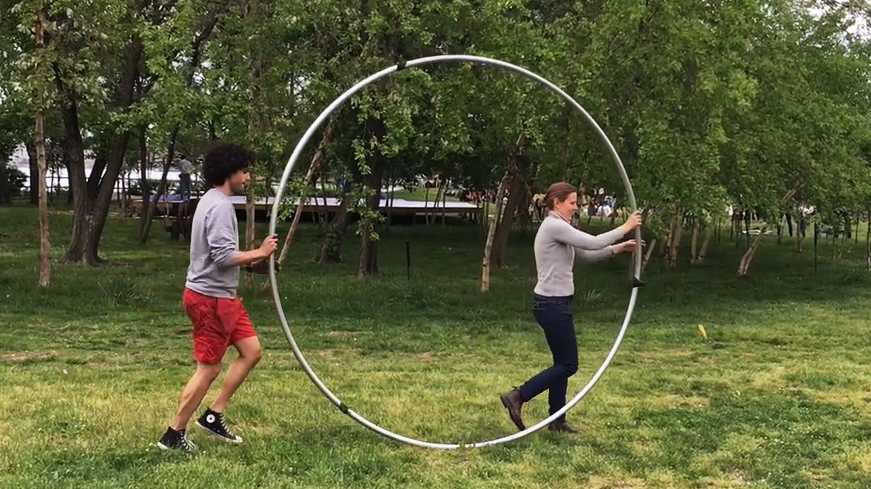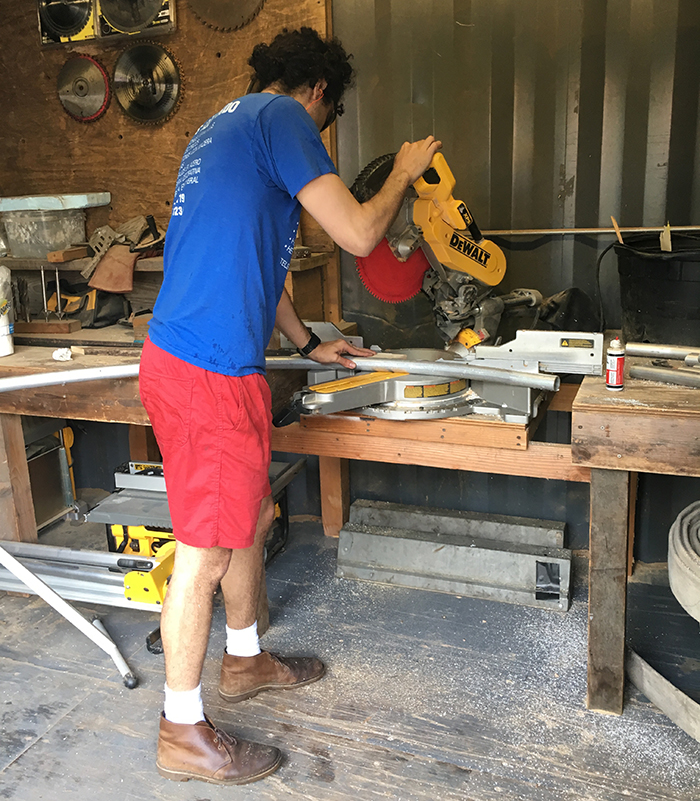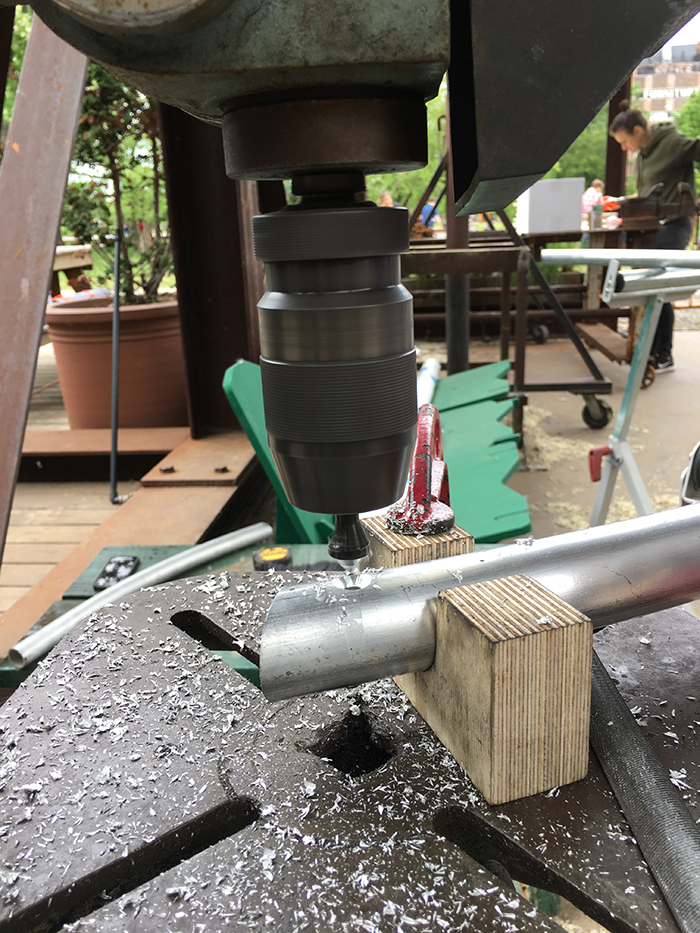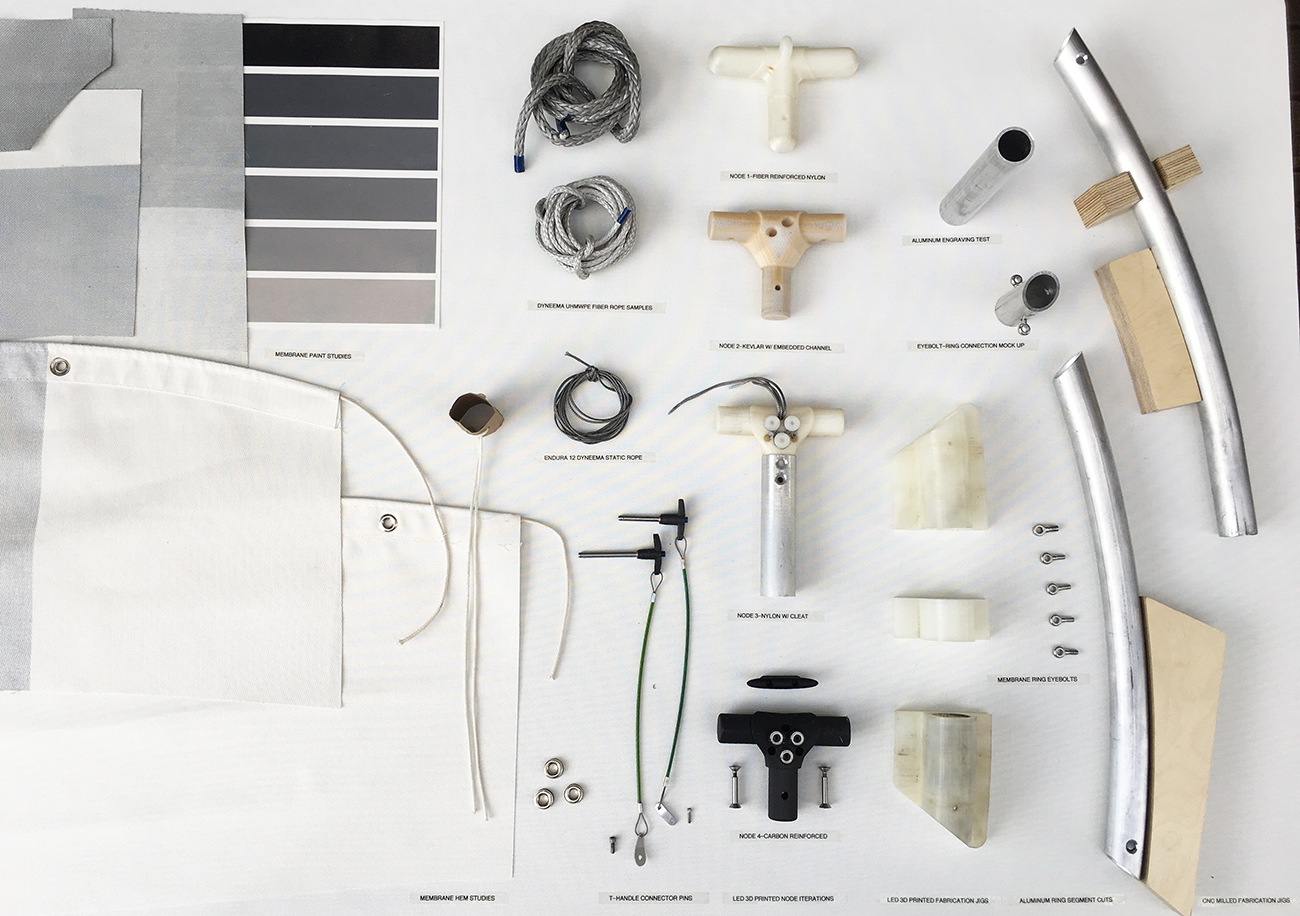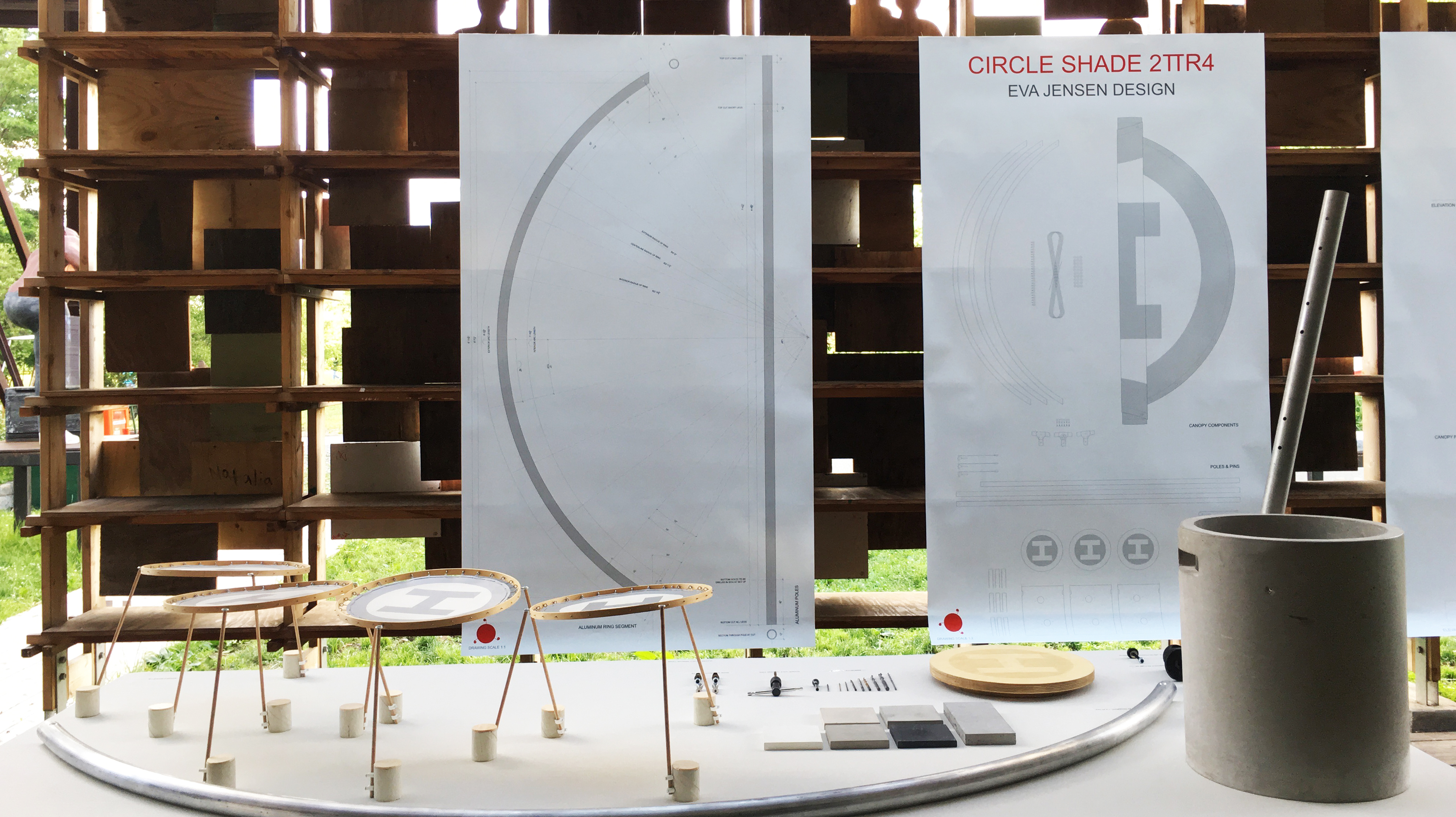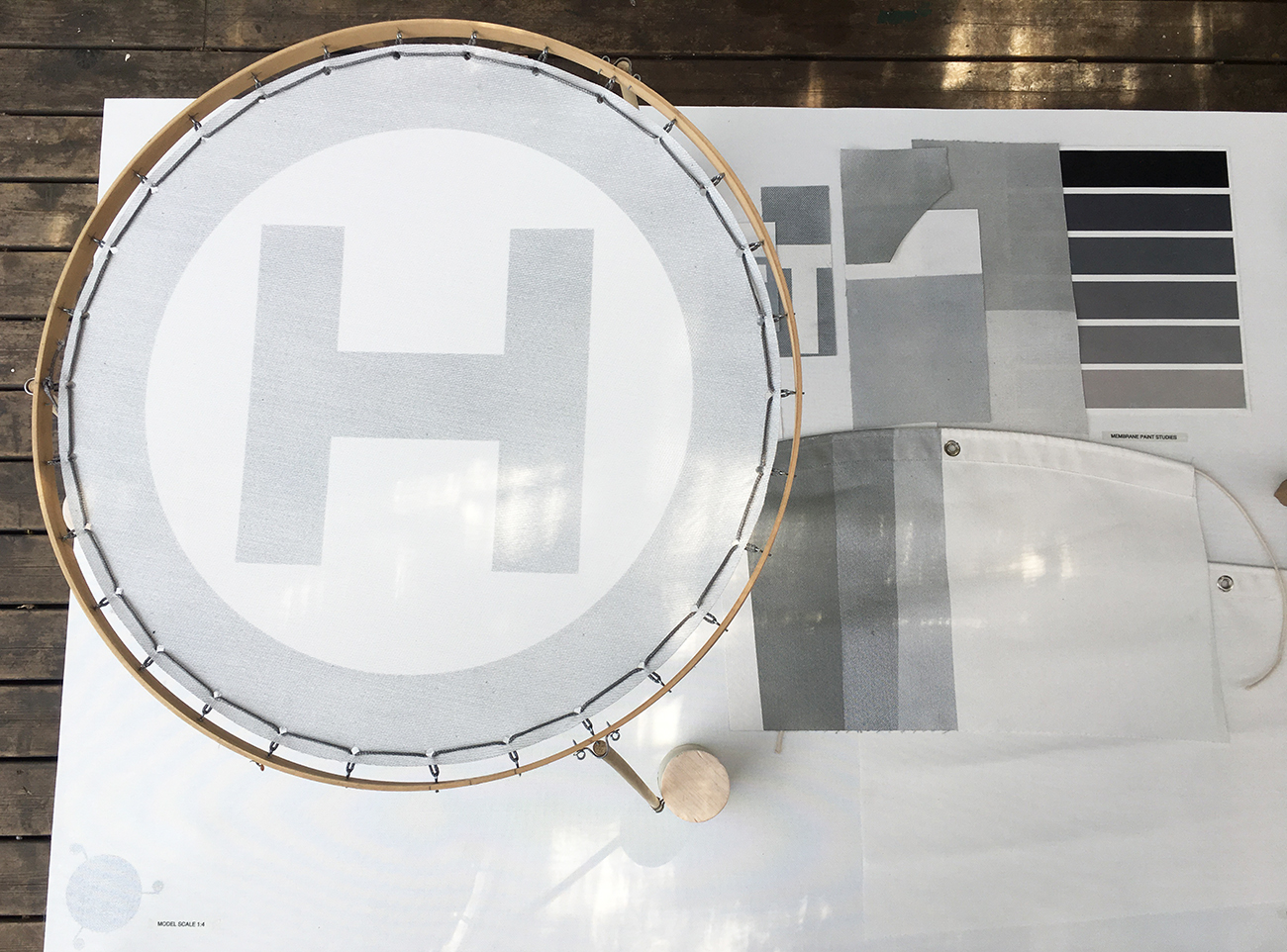Circle Shade – 2πR4: Inspiration & poetics
By Eva Jensen
Circle Shade – 2πR4 is a refined, portable, demountable canopy system designed and developed by my team at Eva Jensen Design as a kit-of-parts for quick assembly. The design vocabulary is minimal and clean, based on the structural tripod concept, with 3D-printed nodal connections.
A single Circle Shade – 2πR4 unit consists of three main components encompassing seven parts: one canopy, three poles and three cylindrical counterweights. To connect these basic elements, we designed custom 3D-printed joint nodes. The circular canopy was conceived as a large ring that can be rolled for ease of mobility, and was inspired, in part, by wheels we observed during a visit to Socrates Sculpture Park. The circle canopy crowning the structure also displays Socrates’ logo. The supporting poles are anchored by counterweights that serve as seat, back rest, table top, or step stool for use during set up. Circle Shade structures can be erected as a single unit or deployed in a series for gatherings and social events. In this way, they adapt to a range of settings from park landscapes to waterfront and urban environments.
The Circle Shade unit is composed of two fundamental geometries—the circle and the triangle—that shape and define the design DNA from overall structure to the intricate detailing of the 3D-printed joint node connectors. We conceived the structures as minimal tripods anchored by weighty feet, each radiating the energy of a wheel. As a constellation in the landscape, a playful composition of dynamic structures emerges, casting restful rhythms of round shadows punctuated by a faster beat of cylindrical drums.
Prior to the actual residency, we spent time at Socrates Sculpture Park working in our studio to develop the details for fabrication by creating models, mock-ups, and 3D test prints of the joint nodes and counterweight brackets. Early in the process, we determined how much we could fabricate ourselves with the tools available at Socrates’ workshop, and which parts required specialized machinery and skill sets.
The ring segments required professional tooling. We looked to Z-Studios, one of the few Long Island City-based workshops that had the bending dies for the aluminum tubing we specified. The material complexity of the shading membranes and concrete counterweights also required us to seek assistance from specialized workshops.
We cut, drilled, and finished the aluminum poles and ring segments on-site at the Park. In order to control the precision necessary for the assembly hardware, we developed CNC-milled and 3D-printed jigs to assist the process. We finished the Russian birch plywood seats for the counterweights and applied the Socrates logo to the shading membrane. While at Socrates, we also tested the assembly of the aluminum frame structure. Once we received the concrete counterweights, assembled the rings, and laced the membranes to the frame to finish the canopies, we completed the kit-of-parts, and the Circle Shade units were ready.
It was beautiful to experience the spring season at Socrates Sculpture Park, and our working on-site provided an opportunity to interact with both the studio staff and the visitors. As we worked outdoors, we were often exposed to the Park’s numerous events and public programs. In this way, we got a head start introducing the Circle Shade project to the general public.
Inspired by this experience, I decided that it would be beneficial to synthesize the design-build process for an exhibition on view during the opening of Circle Shade. I sought to shed light on the design’s development and enable visitors to draw connections between process and finished product. The exhibition displayed a selection of the work models, full-scale mock-ups, hardware, tooling, and jigs, all accompanied by a choice of fabrication drawings. It told the story of the design’s engineering and its iterations.
Explore
Aranda\Lasch lecture
March 5, 2015 | Benjamin Aranda and Chris Lasch | Blending history and storytelling with design driven by computation, Aranda\Lasch’s projects often grow from one repeated module.
Conversation: Jerome W. Haferd and K. Brandt Knapp
An interview with the winners of the 2012 Folly competition co-organized by the League and Socrates Sculpture Park.
John Hejduk
John Hejduk's (1929-2000) highly theoretical work is demonstrated in his isometric projection drawings that deal with the organization of shape and volume.

